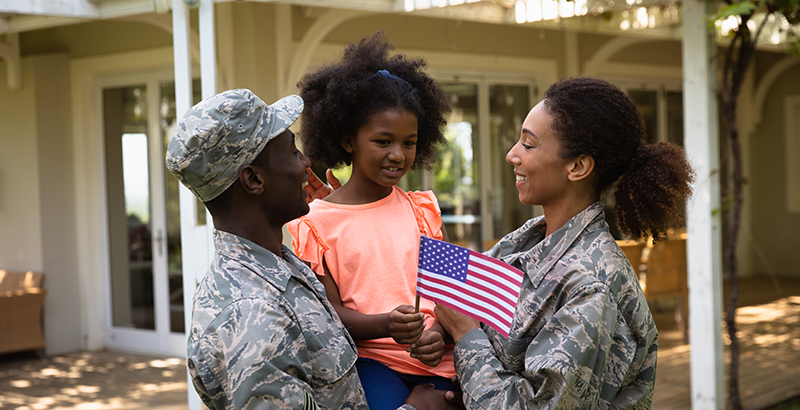Porter: 10 States Honor Purple Star Schools That Support the Needs of Military Kids. More States and Districts Should Do the Same

As schools across the country face a new and unsettling normal, U.S. service members who are parents of K-12 students transitioning into new schools are holding their collective breath.
Transitions are hard enough for military kids whose families are required to pull up stakes every two to three years, but during the maelstrom of COVID-19 these moves are becoming a whole new challenge. Not only must kids cope with new teachers, school culture, course offerings and graduation requirements — now, many must adjust to it all through the prism of virtual learning. Military kids are resilient, but as their parents recognize, this is unprecedented.
The number of children affected by these transitions is significant, with an estimated 1.2 million military-connected children enrolled in schools in the United States and abroad and 200,000 of them heading to a new school in any given year, possibly with a parent away on deployment.
That’s why my organization, the nonprofit Military Child Education Coalition, is encouraging states and school districts to launch a Purple Star School designation program.
The Purple Star School movement is a grassroots initiative that urges states and school districts to identify schools as friendly to, and familiar with, the unique needs of military-connected children. A Purple Star School designation lets military parents know — whether they are on active duty or in the National Guard and Reserves — that a school is dedicated to helping their child gain the educational skills necessary to be college-, workforce- and life-ready.
Sullivan High School in Sullivan, Indiana, recently received the designation, and it has become a source of pride. Lynn Norris, a teacher there, underscored the value for military kids attending the school.
“I think it’s really important for a small rural community, who might not think that there are many kids impacted by deployments. I know that we have [students] whose family members are in the Guard and served in the Guard. We recognize that their parents’ commitment can be difficult for them,” she said.
The program gets high marks from service member parents, many of whom routinely search for Purple Star Schools upon receiving orders that require a move. Julie Shepard, a Navy spouse and PTA military family liaison in Fairfax County, Virginia, said the program gives military families “peace of mind knowing that a school has been awarded a purple star by the state, that the school has made a commitment to taking care of this special population of students.”
To date, Texas, Tennessee, Virginia, Montana, Ohio, Arkansas, South Carolina, North Carolina, Georgia (where they are called Military Flagship Schools) and Indiana have Purple Star School programs. The coalition’s goal is to sign up all 50 states, because there are military personnel from coast to coast and because these children are moving all the time.
Purple Star School programs are established by a state’s education authority or by an individual school district. Each state or district sets the criteria that individual schools must meet for designation.
The coalition recommends four broad requirements that are underpinned by the landmark Secondary Education Transition Study, commissioned by the U.S. Army Community and Family Support Center to examine the impact of repeated moves on military-connected high school students. These include requiring that schools:
- Designate a staff member as a point of contact for military students and families;
- Establish and maintain a dedicated page on its website featuring information and resources for military families;
- Maintain a student-led transition program, where students help the military child create social connections; and
- Provide professional development for staff on special considerations for military students and families.
When the nation returns to some version of normal once the pandemic subsides, military kids will return to their own version — moving into new towns and new schools every few years, with their service member parents hoping their kids stay on track academically and socially.
A Purple Star School program offers more than just hope. It offers help.
Becky Porter, Ph.D., is president and CEO of the Military Child Education Coalition.
Help fund stories like this. Donate now!

;)